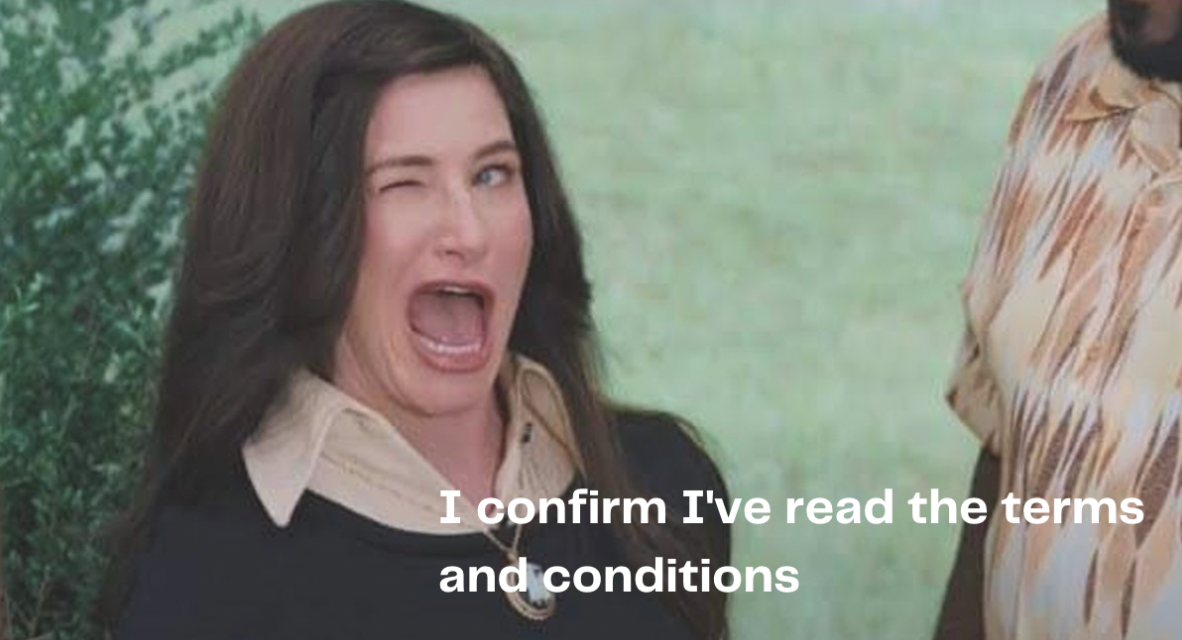
When it comes to UX writing, for most companies, it’s fairly easy to just apply the basic principles like “keeping things simple” and “putting the user at the centre of any content you create”. But what about brands who need to give users a lot of jargon-filled information, or insurers that are mostly concerned with a user’s product (such as a vehicle), rather than the user themselves? These are a couple of the dilemmas that insurance brands face when they’re creating UX content. More broadly, it’s a common challenge in financial services copywriting and content design.
It’s worth mentioning from the onset that, for most people, insurance brands aren’t their favourite people to deal with. The average customer dreads the time of the year when they have to think about renewal. For this reason, customers will typically only interact with their insurer for one of four reasons:
- To take out a new policy
- To make a claim on their policy
- To complete a self-service task, like updating their contact details
- To cancel their policy
The content related to scenario two is arguably the most important because it influences the insurance company’s customer retention rate. Every brand is different depending on which sector of insurance it deals with, but there are a few fundamental points to consider when you’re writing UX copy as an insurance brand.
Keep it short and simple
It’s cliche, I know, but with good reason. Insurance is a field where it’s particularly easy to overcomplicate content or alienate your customers with jargon. It’s important to remember that most people have very little limited knowledge of the concepts you’re presenting to them until scenario two, when they need to make a claim. You don’t want to overwhelm your customers, so it’s best to keep things concise, and break down complex copy.
For example, if you need to use industry-specific terminology, consider replacing it with a simpler term, or including a brief explanation of what it means. You could also include components, such as tool tips, so customers can easily find more information if they want it.
Tone of voice is key – but be adaptable
It’s safe to say that insurance brands aren’t the most lovable companies in the market. In general, they’re seen as a “needs must” investment (or expense). With that in mind, a lot of companies will try to overcompensate for their estranged relationship with their customers by adopting a friendly tone of voice.
This is absolutely the right approach.
You always want your customers to feel that you’re a helping hand, and adopting a more relaxed tone of voice is one way of getting that message across. A couple of ways you can do this is by using contractions in your content, and cutting out the corporate speak. That’ll turn a sentence like “We will review the evidence that you have provided” into “We’ll take a look at the evidence you’ve sent us”.
That said, there are definitely times where a more clear-cut approach should be prioritised over being friendly. Whenever you’re giving customers important information, such as communicating policy exclusions, or telling them “bad news”, ensure that your copy is clear and direct so you can get them to a resolution as quickly as possible.
User personas are invaluable to the claims process
User persona development is something most big brands engage with on the sales-side. Unfortunately, it’s less common on the customer experience side. Insurance is one of the most dynamic products you can get as it relates to a user’s mindset or mood. The reason they’re engaging with you today is most likely the single biggest factor determining how their day is going.
A big mistake that we’ve seen insurance brands make is assuming that their users are vaguely the same. Even if your insurance company only offers insurance to 54-year-old vegetarian Volvo drivers called Brian who live in Stockport, no two users will be in the same headspace when they come to engage with your claims process.

That’s why users need to be segmented by more than just the car they drive, or their risk profile. Imagine, for a second, all of the possible scenarios in which an insurance customer will engage with a claims journey. These scenarios range from “I’ve just gone to get in my car and I’ve noticed a scratch” to “I am on the hard shoulder of the M25 and my car is undriveable.” Between those two extreme points on the spectrum of user sentiment, you’ll have users who have had their vehicle stolen, users who have been in an accident that involved other people (including pedestrians) and users who have put in the wrong fuel, and are fretting about whether or not they’ve completely destroyed the transmission.
So, claims journeys need to be sufficiently distinct to handle these users. They also need to give users an intuitive way to self-select their way into the correct journey, based on what is happening to them in the moment, and not based on the details they provided at the quote or renewal stage.
A fairly safe way to handle this dynamic is to give users a handful of ‘broad spectrum’ scenarios to choose from before we ask them to start sharing information. These may look something like this:
- “I’m at the side of the road and I need immediate assistance”
- “I’ve been in an accident and someone was hurt”
- “I want to report something about my vehicle”
- “I’m fine but there’s a problem with my vehicle”
- “I just want to complete a task”
Call-to-actions are indispensable
As harsh as it may sound, most people don’t interact with insurance brands for fun. They’re coming here to complete a task, whatever it may be. Our job is to help them do that. Remember, the customer is on a journey. This means that everything on their screen should get them one step closer to their destination.
Call-to-actions don’t just apply to instructive copy and they’re not just for the end of the sales funnel. They’re also relevant in ads, buttons, modal components, and so on. For example, when you’re taking a customer through a series of screens, the button copy on each screen should read ‘Next’ or ‘Finish’ (on the final screen), rather than ‘OK’, so it’s clear that they’re moving onto another step.
Conclusion
Insurance is – for the most part – inherently boring. Some brands are doing really interesting stuff with their products and journeys. For example, By Miles have a product that charges by the mile. But on the whole it’s very much one to file under ‘boring but important’. But it is important.




